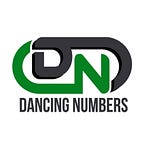The Ultimate Guide to QuickBooks Data Conversion
In the realm of modern business, data is the lifeblood that fuels operations, decisions, and growth. For businesses utilizing QuickBooks as their primary accounting software, data conversion is a crucial process that ensures a seamless transition between systems, upgrades, or migrations. In this comprehensive guide, we delve deep into the intricacies of QuickBooks data conversion, offering insights, best practices, and expert tips to streamline the process and optimize results.
Understanding QuickBooks Data Conversion
What is QuickBooks Data Conversion?
QuickBooks data conversion involves transferring financial data from one format or version of QuickBooks to another. This process may be necessary when upgrading to a newer version of QuickBooks, migrating data to the cloud, or switching from another accounting software to QuickBooks. The goal is to retain accuracy, integrity, and completeness throughout the conversion process.
Why is QuickBooks Data Conversion Important?
Effective data conversion is essential for maintaining business continuity and ensuring accurate financial records. By preserving data integrity and consistency, businesses can avoid disruptions, minimize errors, and make informed decisions based on reliable information. Additionally, seamless data conversion enhances productivity and efficiency, allowing organizations to focus on strategic initiatives rather than wrestling with data inconsistencies.
Key Considerations for QuickBooks Data Conversion
Assessing Data Compatibility
Before embarking on a data conversion journey, it’s crucial to assess the compatibility of existing data with the target QuickBooks platform. This involves evaluating file formats, data structures, and any potential limitations or constraints that may impact the conversion process. Conducting a thorough analysis upfront can help identify potential challenges and develop appropriate strategies to overcome them.
Choosing the Right Conversion Method
QuickBooks desktop data conversion can be performed using various methods, including manual data entry, import/export tools, third-party software, or professional services. The choice of conversion method depends on factors such as data volume, complexity, and desired outcomes. While manual entry may be suitable for small datasets, automated tools or services are often preferred for larger-scale conversions to ensure accuracy and efficiency.
Data Cleansing and Preparation
Data cleansing involves identifying and correcting errors, inconsistencies, or duplicate records within the dataset before initiating the conversion process. This step is crucial for maintaining data integrity and preventing issues such as reconciliation errors or inaccurate financial reporting. By investing time and effort in data preparation upfront, businesses can minimize risks and streamline the conversion process.
Testing and Validation
Once the data conversion is complete, thorough testing and validation are essential to verify the accuracy and completeness of the converted data. This involves comparing source data with converted data, reconciling balances, and performing sample transactions to ensure consistency and integrity. Any discrepancies or anomalies should be identified and addressed promptly to avoid potential issues down the line.
Best Practices for Successful QuickBooks Data Conversion
Plan Ahead
Effective planning is the cornerstone of successful data conversion. Define clear objectives, establish timelines, and allocate resources accordingly to ensure a smooth and seamless transition.
Backup Data
Before initiating the conversion process, always create a comprehensive backup of your existing data to safeguard against potential data loss or corruption. This backup serves as a safety net in case of any unforeseen issues during the conversion process.
Engage Stakeholders
Involve key stakeholders, including accountants, IT personnel, and department heads, throughout the data conversion process to ensure alignment, collaboration, and support. Clear communication and collaboration are essential for addressing concerns, resolving issues, and mitigating risks effectively.
Train Users
Provide adequate training and support to users who will be interacting with the new QuickBooks system. Empower them with the knowledge and skills needed to navigate the software, input data accurately, and leverage its full capabilities to drive business success.
Monitor Performance
Continuously monitor the performance of the converted data and address any issues or discrepancies promptly. Regular audits, reviews, and reconciliation processes can help maintain data integrity and identify areas for improvement.
Conclusion
QuickBooks data conversion services is a critical process that requires careful planning, execution, and monitoring to ensure success. By following best practices, leveraging appropriate tools and resources, and prioritizing data integrity, businesses can streamline the conversion process, minimize risks, and maximize the benefits of their QuickBooks investment.
